Steven Spielberg, born on December 18, 1946, in Cincinnati, Ohio, is a legendary filmmaker whose impact on cinema is unparalleled. From creating the summer blockbuster genre with “Jaws” (1975) to the poignant storytelling of “Schindler’s List” (1993), Spielberg’s work spans genres and decades.
His films have grossed over $10 billion worldwide. A winner of three Academy Awards, Spielberg co-founded DreamWorks Studios in 1994, cementing his status as a pivotal figure in film history.
This article dives into some fun facts about Steven Spielberg, offering a closer look at the man behind these cinematic masterpieces.
1. The Humble Beginnings: Spielberg’s First Camera
At age 12, Spielberg received an 8mm camera from his father, Arnold Spielberg, an electrical engineer. His first project was a train wreck film created in 1958, using his toy trains.
This early endeavor marked the beginning of Spielberg’s lifelong fascination with filmmaking, showcasing his innate ability to weave stories through visual mediums.
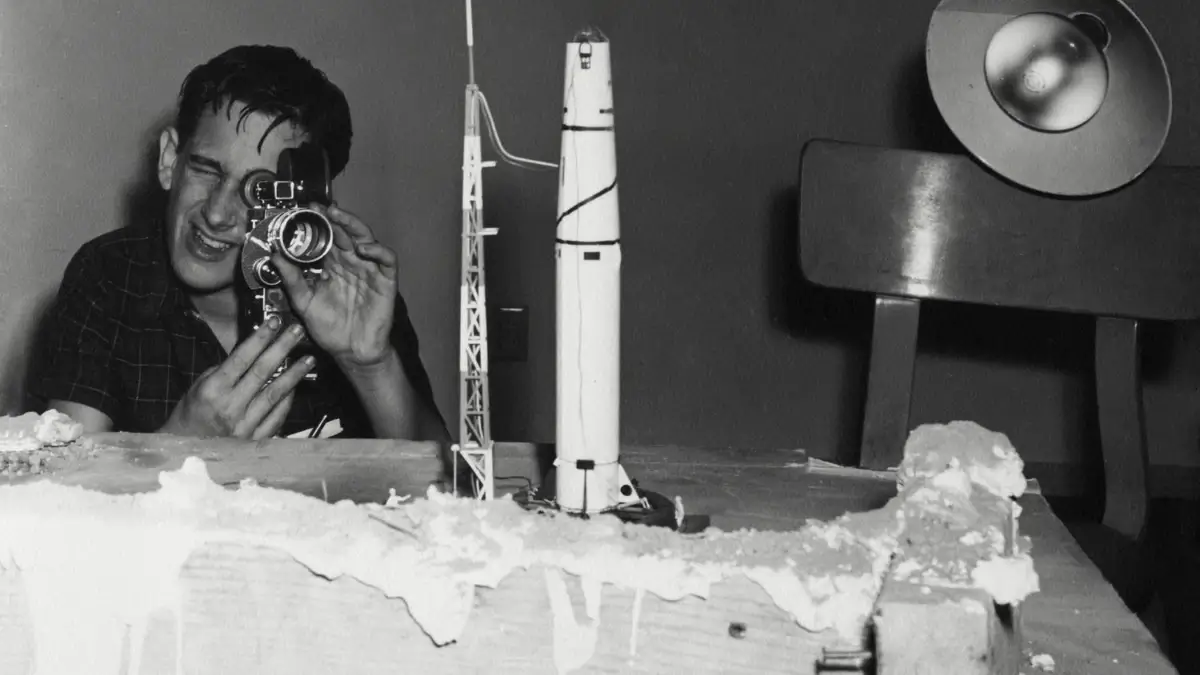
Image: ibb.co
2. Teenage Director: Spielberg’s Early Amateur Films
By 1961, at the age of 15, Spielberg had already directed several independent short films. His 40-minute war film, “Escape to Nowhere,” won first prize at a film festival. In 1963, he created “Firelight,” a sci-fi adventure that later inspired “Close Encounters of the Third Kind” (1977).
These early films, produced with a budget of a few hundred dollars, were critical in developing his skills and storytelling vision.
3. Rejected Twice: Spielberg’s Struggle with Film School Admission
Despite his early passion and talent for filmmaking, Spielberg faced academic setbacks. He was rejected twice by the University of Southern California’s School of Cinematic Arts in the early 1960s. Undeterred, Spielberg enrolled in California State University, Long Beach, and continued to pursue his passion for film.
This period of rejection and perseverance shaped his resolve and dedication to his craft.
4. First Professional Gig: Directing for Universal Studios
In 1968, Spielberg, at 21, embarked on his professional filmmaking journey with a 24-minute short film, “Amblin’,” which led to a seven-year contract with Universal Studios. This made him the youngest director to be signed for a long-term deal with a major Hollywood studio.
His first assignment was directing an episode of “Night Gallery” in 1969, showcasing his capacity to handle major studio productions at a young age.
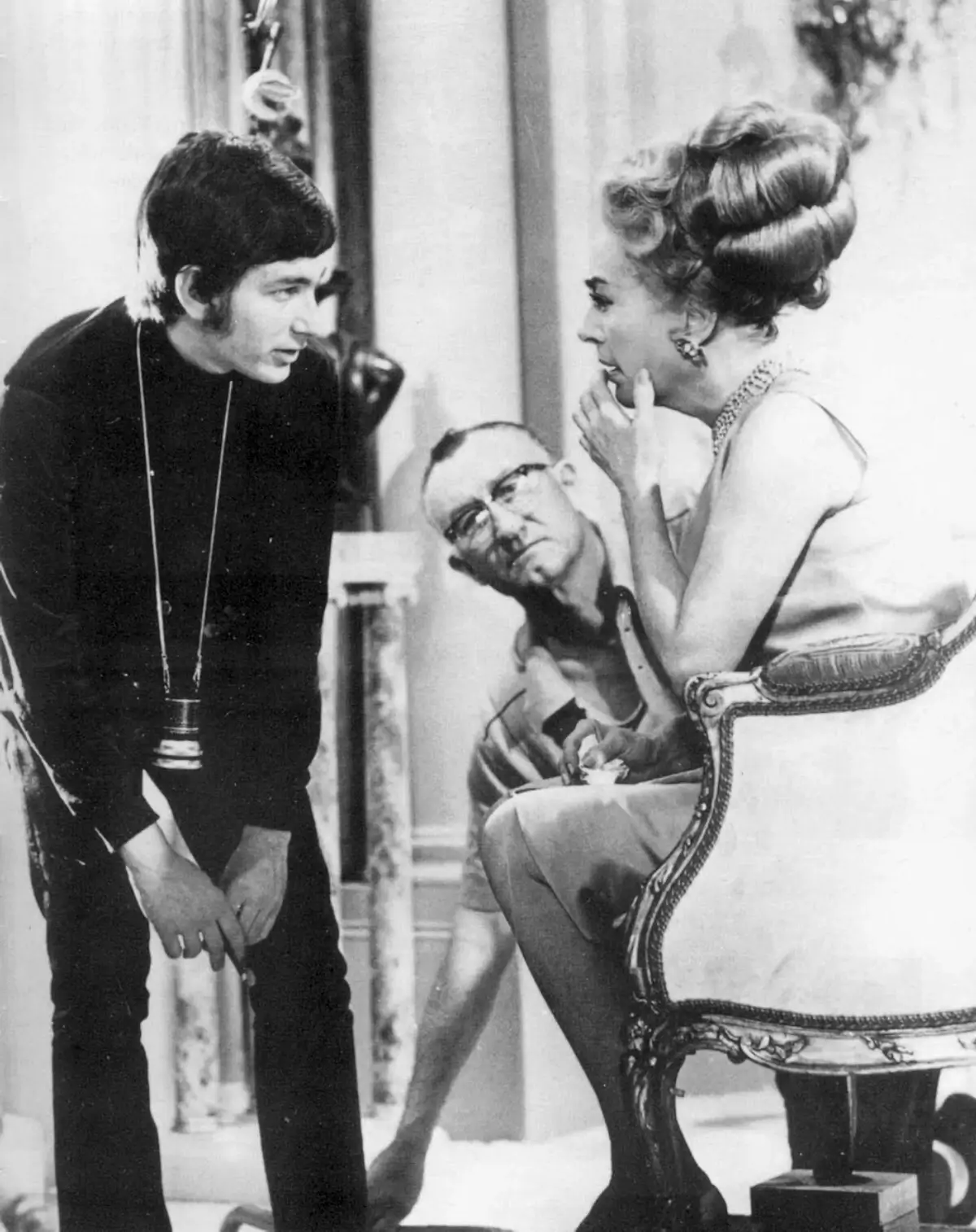
Spielberg on the set of “Night Gallery”. Image: 9gag.com
5. The Unseen Masterpiece: Spielberg’s Lost Film
In the late 1960s, Spielberg worked on a project titled “Slipstream,” a film that was unfortunately never completed. This “lost film” of Spielberg’s was to be a time-travel adventure, showcasing his early interest in science fiction themes. The project, ambitious for its time, had to be abandoned due to budget constraints and technical challenges.
“Slipstream” remains a fascinating what-if in Spielberg’s filmography, hinting at his future endeavors in the sci-fi genre.
6. Spielberg’s Paleontology Passion
Steven Spielberg’s childhood enthusiasm for paleontology significantly influenced his creation of “Jurassic Park” (1993). His early fascination with dinosaur fossils and prehistoric life sparked a lifelong interest, which he seamlessly integrated into his filmmaking.
In recognition of his impact on popularizing paleontology through this blockbuster, Spielberg was named an honorary member of the Paleontological Society, highlighting the intersection of his artistic work with scientific education and public awareness.
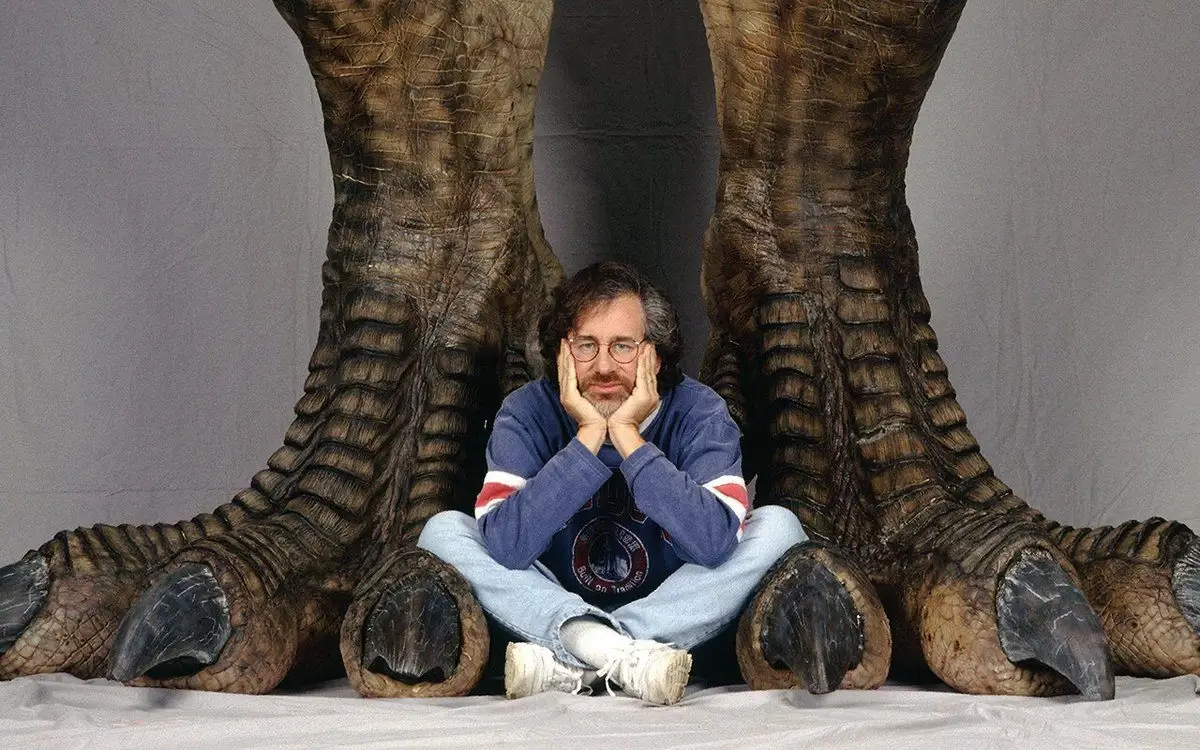
Image: pinimg.com
7. Pioneering Digital Cinematography: Adopting the Digital Camera
Spielberg was one of the early adopters of digital cinematography in major feature films. With “Attack of the Clones” (2002), he consulted with George Lucas, who used digital cameras for the film.
Impressed by the technology, Spielberg then shot “Minority Report” (2002) digitally, contributing to the industry’s shift towards digital cinematography.
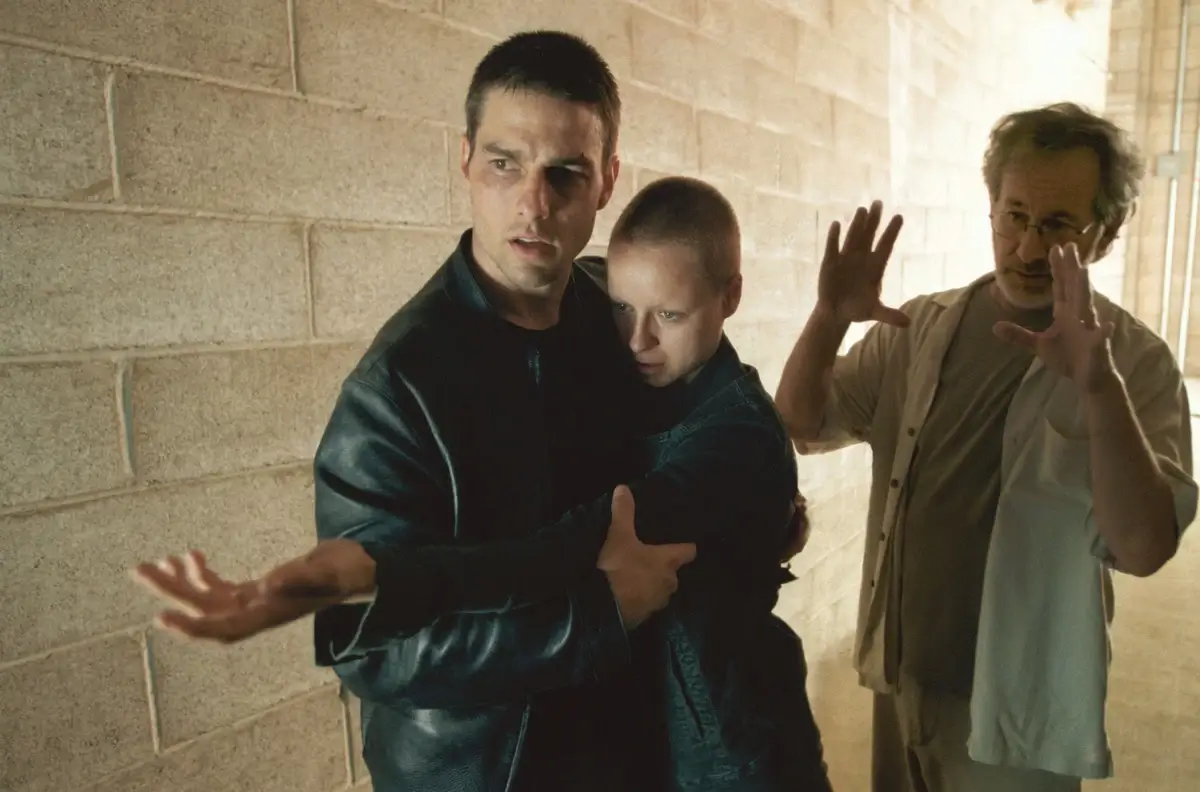
Spielberg on the set of “Minority Report.” Image: thesun.co.uk
8. Exploration of the Sea: Underwater Filmmaking in “Jaws”
In “Jaws” (1975), Spielberg took on the challenge of underwater filmmaking, a feat rarely attempted at the time. The underwater scenes required innovative techniques and equipment, contributing to the film’s realism and suspense.
Spielberg’s willingness to explore new territories in filming techniques added to the film’s success and his reputation as a versatile director.
9. Innovative Sound Design in ‘Saving Private Ryan’
For “Saving Private Ryan” (1998), Spielberg collaborated closely with sound designers to create an immersive and realistic auditory experience. The film’s opening sequence, the D-Day invasion at Omaha Beach, features a groundbreaking sound design that includes a technique called “audio black” to mimic the sensation of shell shock experienced by soldiers.
This attention to auditory detail helped the film win the Academy Award for Best Sound.
10. The Spielberg Face: A Unique Cinematic Technique
Steven Spielberg’s filmmaking style includes a signature technique often referred to as “The Spielberg Face.” This involves characters in his films experiencing awe or wonder, captured in a close-up shot. Their emotional reaction, usually to something off-screen, invites viewers to share in the moment of discovery or amazement.
This technique, evident in films like “Jurassic Park” and “E.T.,” showcases Spielberg’s ability to connect audiences deeply with his characters’ experiences.

Image: Cineville
11. Spielberg’s Philanthropic Ventures: Giving Back to Society
Apart from his cinematic achievements, Spielberg is also known for his philanthropy. He established the Righteous Persons Foundation using his earnings from “Schindler’s List,” which aims to support Jewish community projects. Additionally, his USC Shoah Foundation has recorded over 50,000 testimonies of Holocaust survivors.
These ventures reflect Spielberg’s commitment to social causes and historical preservation.
12. Spielberg and Music: His Collaboration with John Williams
Spielberg’s films are often accompanied by memorable scores, thanks to his long-standing collaboration with composer John Williams. This partnership began with “The Sugarland Express” (1974) and has continued for over four decades.
Williams’ iconic compositions for “Jaws,” “Indiana Jones,” and “E.T.” have become inseparable from Spielberg’s visual storytelling, adding emotional depth and resonance to his films.

Steven Spielberg and John Williams. Image: GeekTyrant
13. The Spielberg Touch: His Distinctive Storytelling Style
“The Spielberg Touch” refers to Spielberg’s unique storytelling style, characterized by his ability to blend grand spectacle with intimate human stories. This style is marked by dynamic camera movements, innovative lighting, and a focus on emotional narratives.
Spielberg’s approach to storytelling has not only defined his own films but also influenced generations of filmmakers.
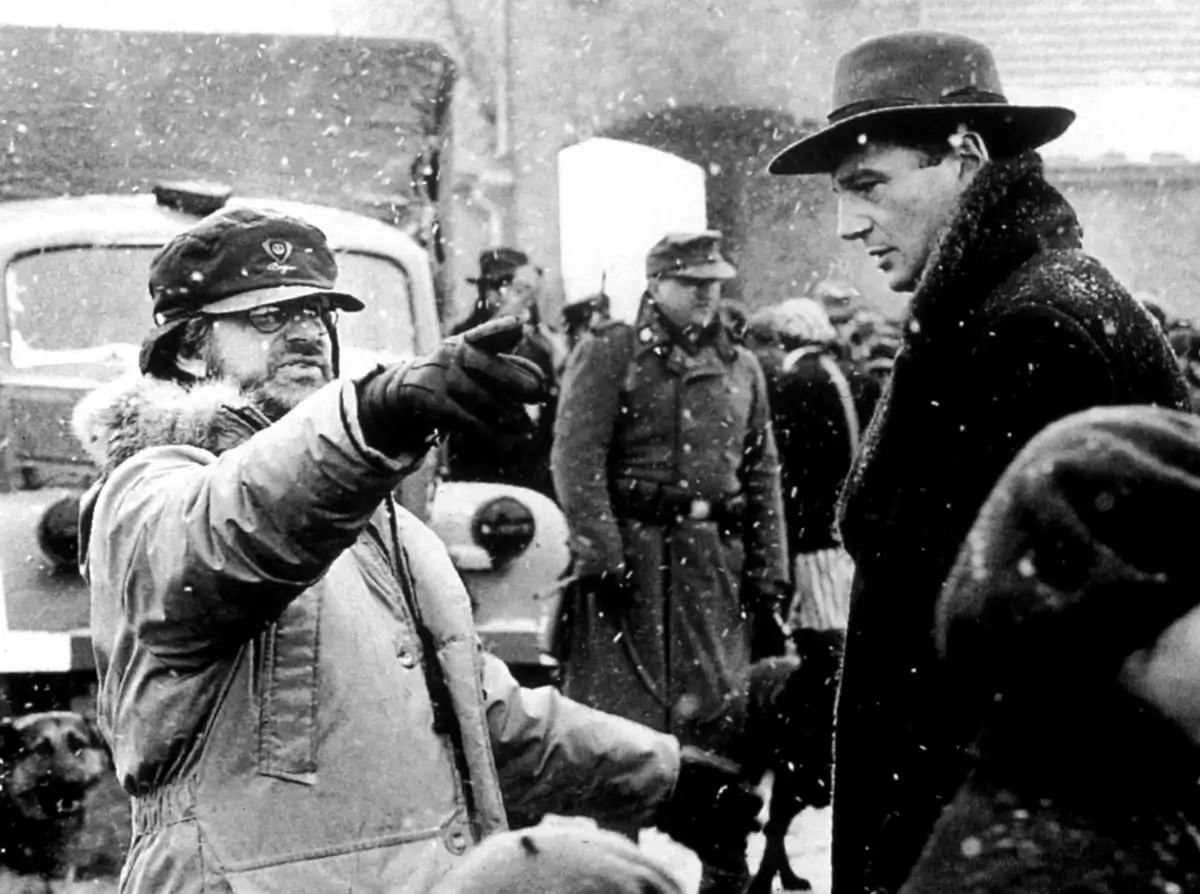
Image: Haaretz
14. Spielberg’s Cameo Appearances: Spotting the Director
Spielberg has made several cameo appearances in his films and others’, often in blink-and-you-miss-it roles. Notable cameos include his voice as a control room technician in “Jurassic Park” and as a county clerk in “Gremlins.”
These appearances are fun Easter eggs for fans, adding a personal touch to his cinematic creations.
15. Influencing the Digital Age: Spielberg’s Role in Video Games
Steven Spielberg’s influence extends beyond cinema into the realm of video games. He co-created the game “Boom Blox” for the Wii console and was involved in the creation of “Medal of Honor,” setting a new standard for storytelling in video games.
His involvement in the gaming industry reflects his understanding of evolving digital entertainment forms and his ability to engage audiences across different media.

Image: Den of Geek
16. Spielberg’s Role in Animation: Beyond Live-Action
Spielberg has also made significant contributions to animation. He co-founded Amblimation, a studio that produced animated films like “An American Tail: Fievel Goes West” (1991) and “We’re Back! A Dinosaur’s Story” (1993).
His collaboration with Warner Bros. led to the creation of beloved animated series like “Tiny Toon Adventures” and “Animaniacs,” showcasing his versatility and creative influence in different entertainment forms.
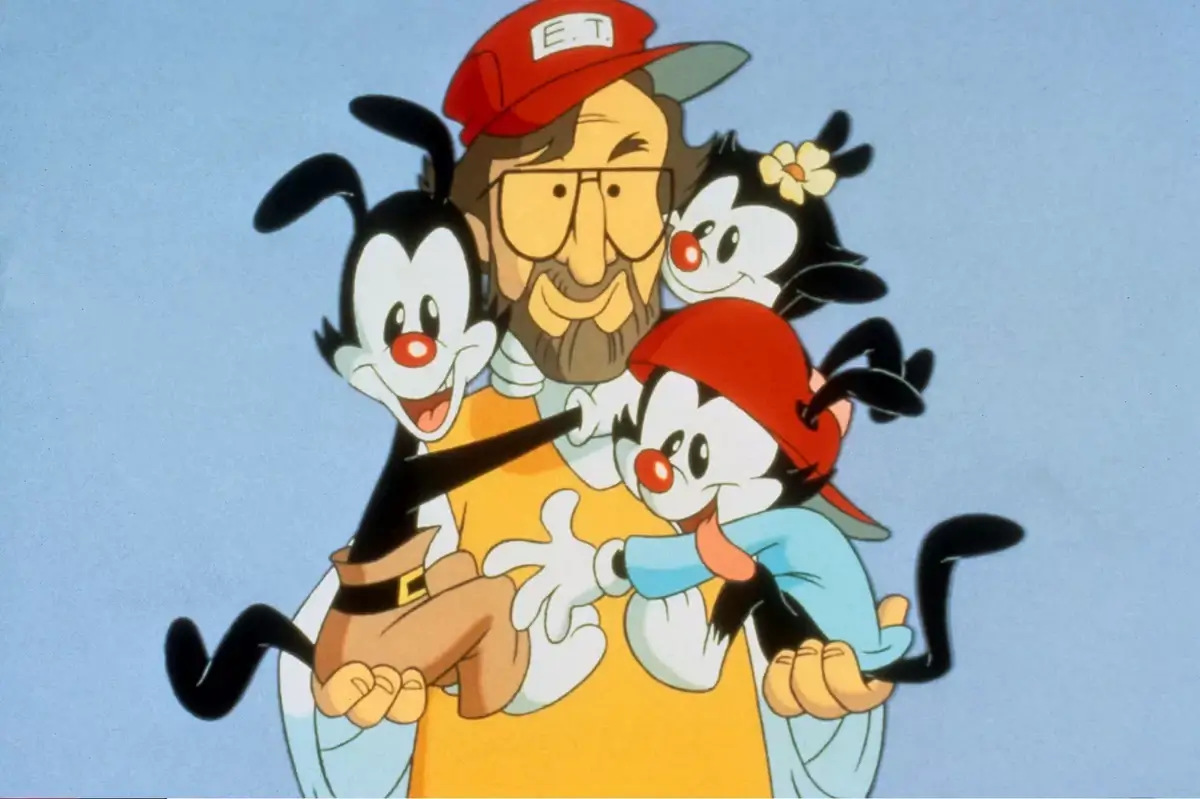
Image: linternaute.com
17. The Director’s Favorite: Spielberg’s Personal Best Film
Among his extensive filmography, Spielberg has expressed a particular fondness for “Schindler’s List” (1993). He regards it as his most personal film, reflecting his Jewish heritage and the importance of remembering the Holocaust.
The film, which won seven Academy Awards, including Best Picture and Best Director, holds a special place in Spielberg’s heart due to its historical significance and personal resonance.
18. Spielberg’s Literary Interests: Book Adaptations
Spielberg’s passion for storytelling extends to adapting literary works into films. Notable adaptations include “Jurassic Park” (1993) from Michael Crichton’s novel, “The Color Purple” (1985) from Alice Walker’s book, and “War of the Worlds” (2005) based on H.G. Wells’ novel.
These adaptations highlight Spielberg’s ability to bring literary worlds to life on the big screen.
19. Unique Filming Techniques: Spielberg’s Innovative Approach
Steven Spielberg’s filmmaking is marked by distinctive techniques. He pioneered the use of the “dolly zoom” in “Jaws” (1975), creating a disorienting visual effect. In “Jurassic Park” (1993), Spielberg combined animatronics with cutting-edge CGI, revolutionizing visual effects.
His innovative use of lighting and camera angles, especially in “Schindler’s List” (1993), enhances storytelling and emotional impact.
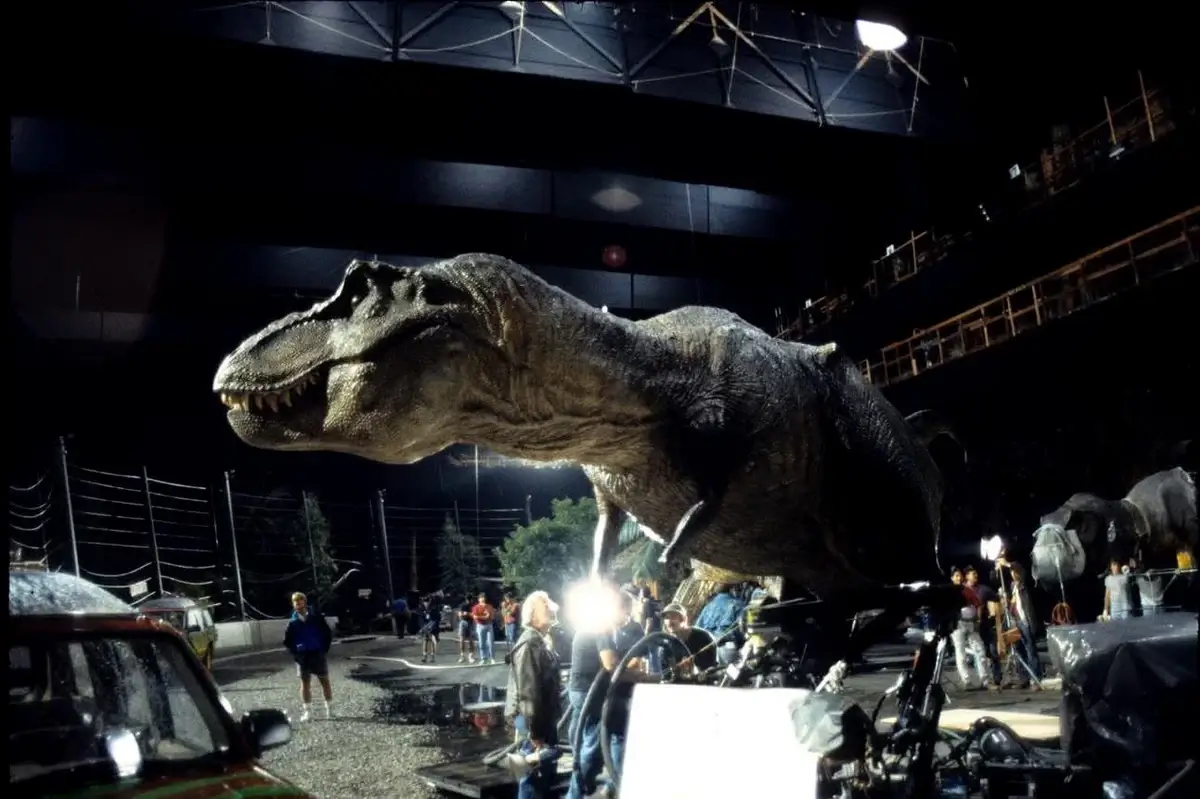
Image: fandom.com
20. Spielberg’s Family: His Life Beyond the Camera
Spielberg, married to actress Kate Capshaw since 1991, is a father of seven. His family has been a grounding force amidst his career.
Spielberg often collaborates with his sisters, Anne and Nancy, in his professional endeavors, showing a blend of family and work.

Spielberg with his family. Image: People Magazine
21. Legacy and Awards: Spielberg’s Impact on Film Industry
Spielberg has won three Academy Awards: Best Director for “Schindler’s List” (1993) and “Saving Private Ryan” (1998), and Best Picture for “Schindler’s List.”
He has directed 33 films, which have grossed over $10 billion worldwide, illustrating his profound impact on the film industry.
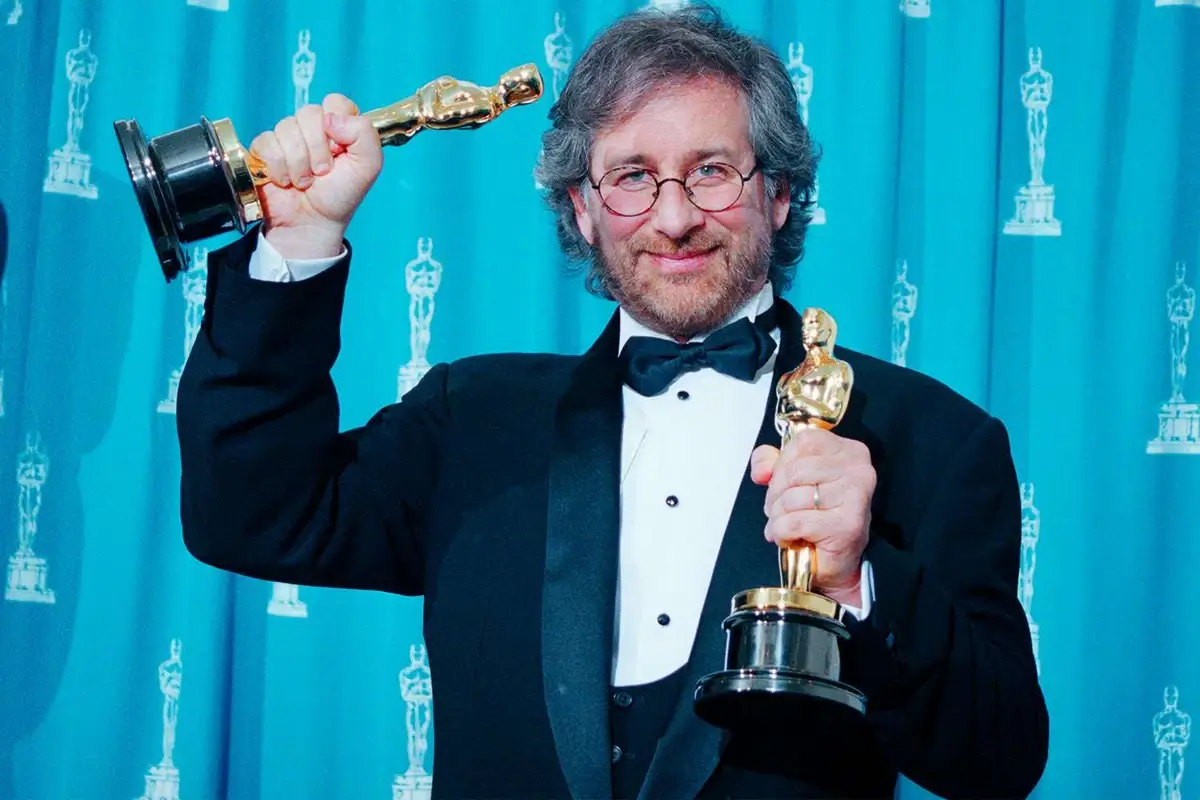
Image: People Magazine
22. Schindler’s List: A Personal Journey for Spielberg
“Schindler’s List” was a deeply personal film for Spielberg. He refused his salary, calling it “blood money.” The film, released in 1993, won seven Oscars and grossed over $321 million worldwide.
It represents Spielberg’s connection to his Jewish heritage and his commitment to historical storytelling.
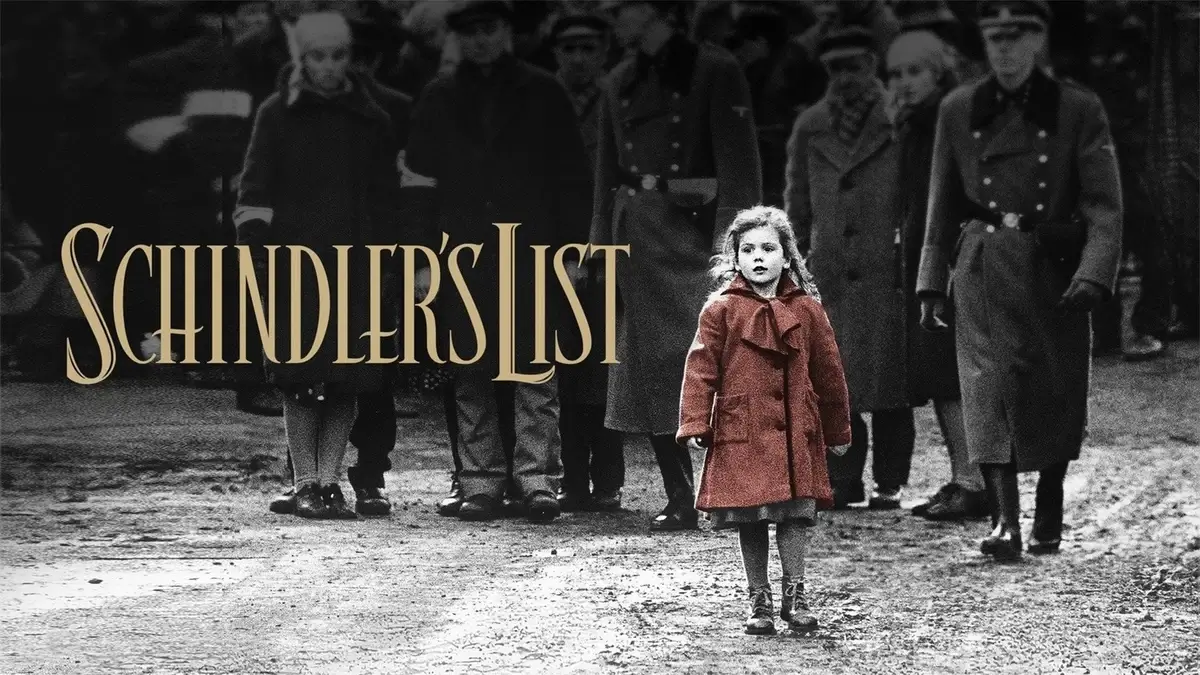
Image: kinorium.com
23. Facing Fears: Spielberg’s Journey to Overcome Aviophobia
Despite his success, Spielberg had a significant fear of flying, a challenge he faced into his mid-40s. Overcoming this fear, he learned to fly, an achievement that highlights his personal resilience.
This step was a profound personal victory, showcasing his ability to confront and conquer his fears.
24. Starry Inspiration: A Meteor Shower Sparks Spielberg’s Imagination
At six years old, Spielberg witnessed a meteor shower in New Jersey, initially believing it to be a UFO.
This awe-inspiring experience fueled his fascination with the unknown and the extraterrestrial, later influencing his films like “Close Encounters of the Third Kind” and “E.T. the Extra-Terrestrial.”
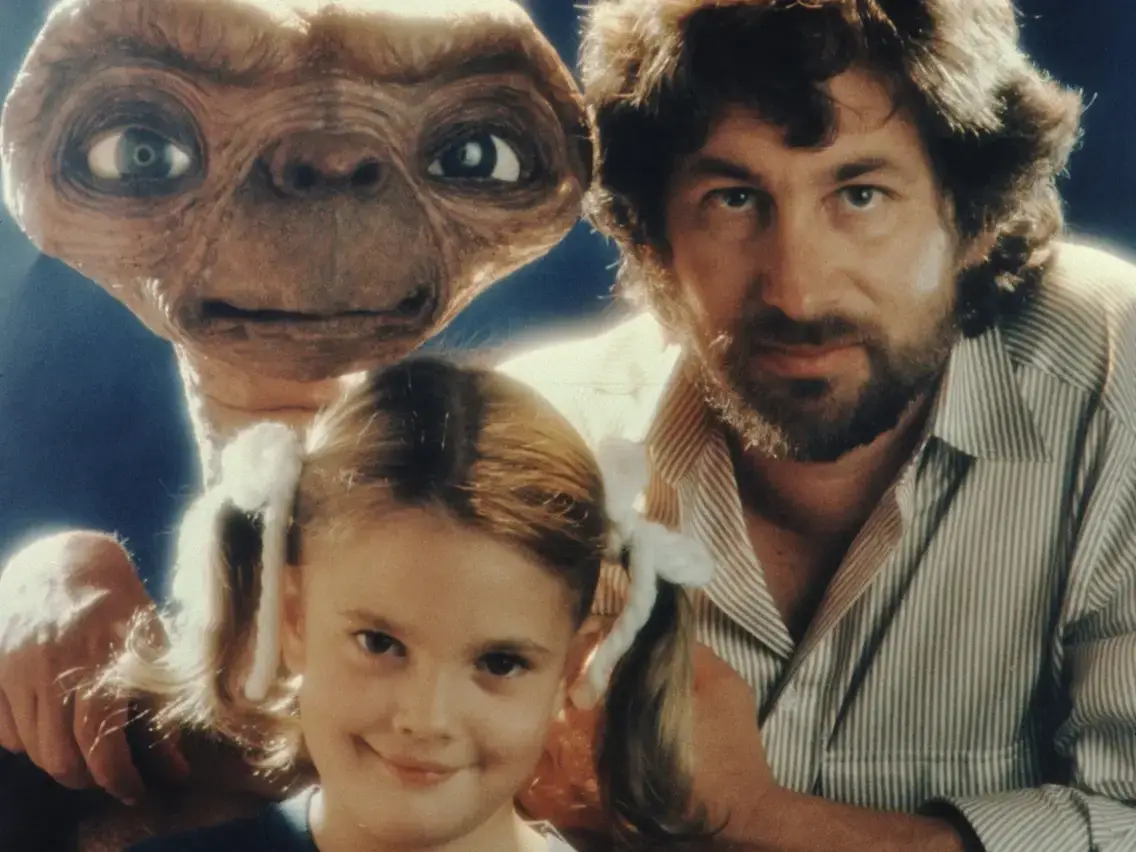
Spielberg and Drew Barrymore, E.T. the Extra-Terrestrial. Image: Insider
25. A Collector’s Dream: Spielberg’s Love for Film Memorabilia
Spielberg’s deep appreciation for cinema history is evident in his collection of rare film memorabilia. Noteworthy items include a piece of the “Rosebud” sled from “Citizen Kane” and a pair of Ruby Slippers from “The Wizard of Oz.”
His collection is a testament to his reverence for cinematic history and his dedication to preserving iconic film artifacts.
FAQ
What was Steven Spielberg known for?
Steven Spielberg is known for being one of the most influential filmmakers in the history of cinema. He is recognized for directing iconic movies like “Jaws,” “E.T. the Extra-Terrestrial,” “Schindler’s List,” and the “Indiana Jones” series. Spielberg’s contributions have significantly shaped the modern film industry, especially in the realms of blockbuster filmmaking and special effects.
Why is Steven Spielberg a billionaire?
Steven Spielberg became a billionaire largely due to his successful career as a director, producer, and co-founder of DreamWorks SKG. His films have grossed billions at the box office worldwide. Additionally, his involvement in various aspects of the entertainment industry, including television and video games, and his share in DreamWorks Animation, have contributed significantly to his wealth.
What was Steven Spielberg’s real name?
Steven Spielberg’s real name is Steven Allan Spielberg. He has not used any stage name or pseudonym in his career, making his birth name synonymous with his extensive work in the film industry.
How did Steven Spielberg change the world?
Steven Spielberg changed the world by revolutionizing the film industry with his innovative storytelling and technical advances in filmmaking. He popularized the concept of the summer blockbuster with movies like “Jaws” and significantly impacted the way films are made, marketed, and perceived. His films often blend entertainment with profound themes, influencing both pop culture and the broader social context.
How many Oscars does Steven Spielberg have?
Steven Spielberg has won three Academy Awards. He won Best Director for “Schindler’s List” and “Saving Private Ryan,” and “Schindler’s List” also won Best Picture. He has been nominated for numerous other Oscars throughout his career.
What does Steven Spielberg do in every movie?
Steven Spielberg often incorporates certain signature elements in his movies, such as powerful visual storytelling, dynamic camera movements, and emotionally engaging narratives. One notable technique is the “Spielberg Face,” a close-up of a character looking off-screen in awe or wonder. However, there’s no single action that he does in every movie.
What was Steven Spielberg rejected from?
Steven Spielberg was famously rejected twice from the University of Southern California’s School of Cinematic Arts. These rejections came early in his career, before he had established himself as a major filmmaker. He later attended California State University, Long Beach.
What inspired Steven Spielberg to make films?
Steven Spielberg’s inspiration to make films stemmed from various sources. As a child, he was intrigued by the possibilities of storytelling through film, often creating amateur movies. His early experiences, such as watching films with his family and his fascination with trains and later, a meteor shower he witnessed as a child, deeply influenced his passion for filmmaking.
Is Steven Spielberg underrated?
Considering his status as one of the most successful and influential filmmakers in the history of cinema, it is difficult to categorize Steven Spielberg as underrated. He is widely recognized for his contributions to the film industry and has received numerous accolades and critical acclaim for his work.





